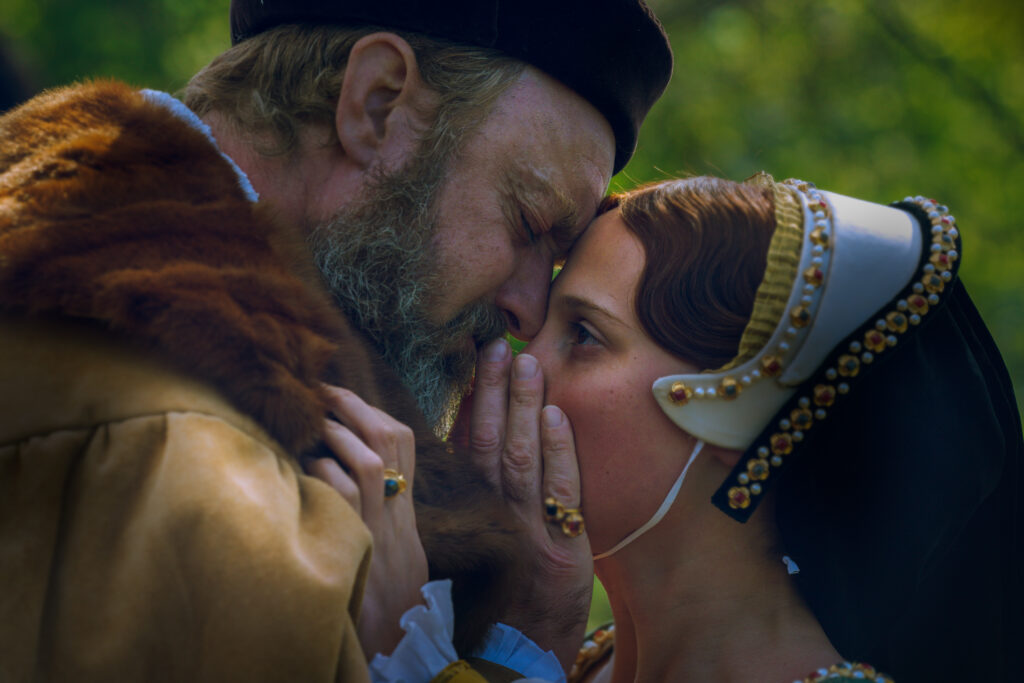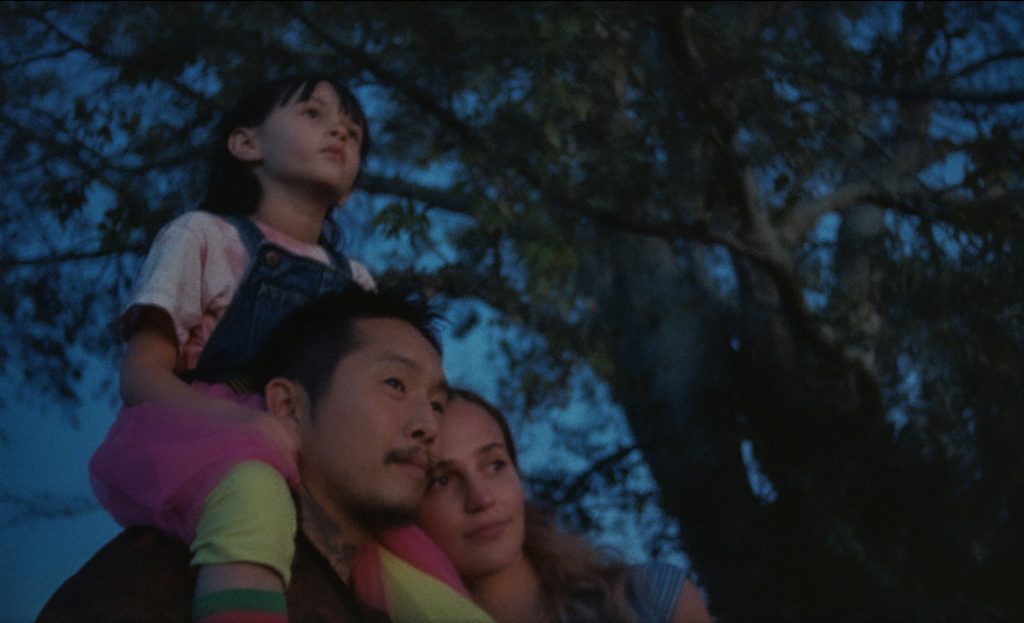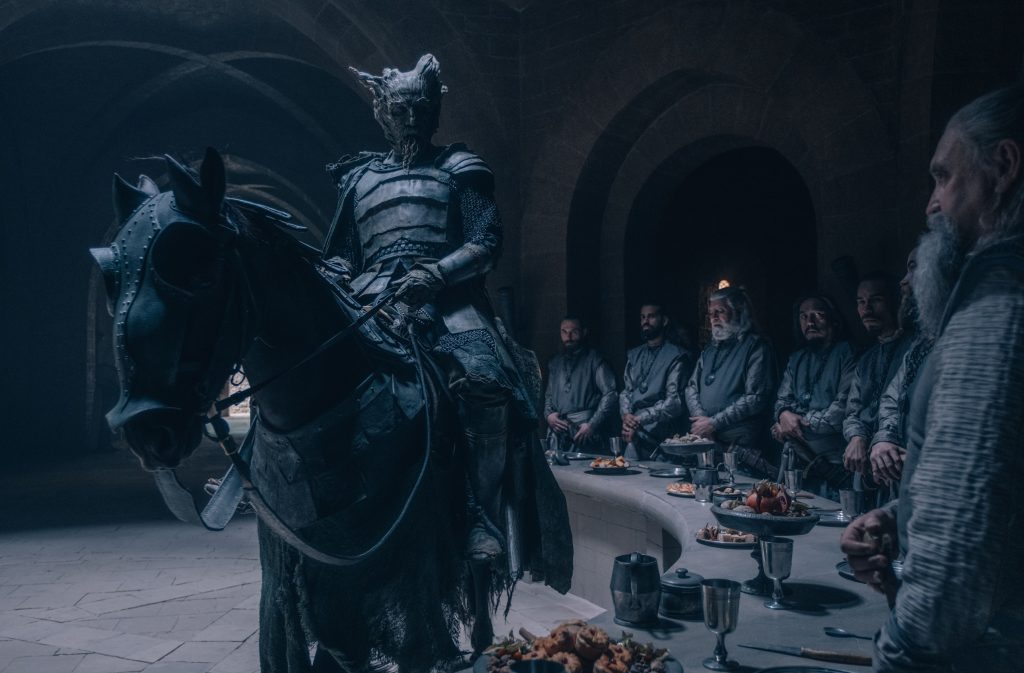July 8, 2023
by Carla Hay

“Firebrand” (2023)
Directed by Karim Aïnouz
Culture Representation: Taking place in the 1540s, in the United Kingdom, the dramatic film “Firebrand” (based on the novel “Queen’s Gambit: A Novel of Katherine Parr”) features a nearly all-white cast of characters (with one black person and one person of Arab heritage) representing the working-class, middle-class, wealthy and royalty.
Culture Clash: King Henry VIII’s sixth wife Katherine Parr is secretly a feminist who wants to shake up the establishment.
Culture Audience: “Firebrand” will appeal primarily to people who are fans of stars Jude Law, Alicia Vikander, and dull period dramas about the British royal family.

Good acting from Alicia Vikander and Jude Law can’t save “Firebrand” from its plodding screenplay and lackluster direction. This revisionist drama, about the British royal family in the 1540s, distorts feminism by turning the film into a man-hating lecture. For a movie that’s supposed to be about an eventful time in British history, “Firebrand” has an awfully thin plot that gets padded with a lot of repetition. “Firebrand” had its world premiere at the 2023 Cannes Film Festival.
Directed by Karim Aïnouz, “Firebrand” is based on Elizabeth Fremantle’s 2012 book “Queen’s Gambit: A Novel of Katherine Parr.” (In real life, Katherine Parr’s name was also spelled as Catherine Parr.) Henrietta Ashworth and Jessica Ashworth, who are twin sisters, adapted the novel for the “Firebrand” screenplay. Viewers who know in advance that “Firebrand” is based on a novel, not a biography, might enjoy the movie better. However, it still doesn’t erase the movie’s problems.
“Firebrand” begins with a voiceover monologue by a teenager whom viewers later find out is King Henry VIII’s daughter Princess Elizabeth (played by Junia Rees), who will be the future Queen Elizabeth I. Princess Elizabeth says: “In a rotten, blood-soaked island kingdom cursed by plague and driven by religious unrest, there once was a queen by the name of Katherine Parr. She was the sixth wife of an angry and ailing king.”
Princess Elizabeth continues: “Of the wives who had gone before, two were cast out, one died in childbirth, and two had their heads struck from their bodies, on the king’s order. Twice a widow, but not yet to conceive a child herself, Queen Katherine gathered the other wives’ children around her, and loved us as her own.”
The monologue continues, “She is the only mother I have ever known. The queen believed in a land free of tyranny. She believed she could steer the kingdom to the light. When the king went to war across the sea, Queen Katherine was made regent. For a moment, it was as though a great weight had lifted and a new dawn was approaching.”
An early scene in the movie shows Queen Katherine (played by Vikander) in a wooded area, where she is watching a religious and political activist named Anne Askew (played by Erin Doherty) give a fiery speech to a small group of people assembled around her. “We must rise up and take what’s ours!” shouts Anne. “Revolution is upon us. The king will be with us, or we well go without him!”
Anne sees Katherine nearby and smirks at Katherine before walking away. Anne and Katherine have not seen each other in seven years. And it would be scandalous if King Henry VIII or anyone else in the royal court found out that Katherine was at at this political rally. (“Firebrand” was actually filmed in the German cities of Reinbek and Hamburg, which look convincing as 1540s England.)
When Katherine and Anne have a private moment together in the woods, Katherine tells Anne that King Henry VIII respects Katherine. She tells Anne: “I believe I was chosen to change the king’s mind.” Anne is skeptical. And it turns out that Anne is right.
King Henry VIII (played by Law) returns from the war. He’s every bit the self-centered brute that someone is to be cruel enough to have spouses murdered by execution, just to end the marriages. The king has gout (shown in graphic details in the movie), but that doesn’t stop him from having passionless sex with Katherine, who doesn’t enjoy these encounters but endures them because she doesn’t want ill-tempered Henry to get angry at her. Katherine wants to placate Henry because she wants him to agree with some ideas she has to give women more rights.
Over time, Katherine finally sees the obvious: Henry isn’t going to change his misogynistic ways anytime soon. He does things such as openly flirt with would-be mistresses right in front of Katherine and other people seated at the royal dining table. In this dinner flirtation, Katherine is hostile to the giggling younger woman named Agnes Howard (played by Anna Mawn), who flirts back with Henry, even though Henry (not Agnes) is more at fault.
Meanwhile, Henry hears gossip that Katherine has been hanging out with Anne, who is considered a radical disrupter. Katherine denies it. What’s a secretive, ahead-of-her-time “feminist” to do? She pretends to be a devoted and submissive wife who goes along with whatever her husband wants until she can figure out a way to outsmart him. That’s essentially what takes up about 70% of “Firebrand,” in very tedious scenes that don’t do much to further the story.
Historical figures such as Princess Elizabeth, Princess Mary (played by Patsy Ferran), Prince Edward (played by Patrick Buckley), Thomas Seymour (played by Sam Riley) and Edward Seymour (played by Eddie Marsan) come and go in the movie like background characters. Thomas and Edward were the brothers of Jane Seymour, Henry’s third wife, who died in 1537, shortly after giving birth to the future King Edward VI. Thomas and Katherine were in a romantic relationship before she married Henry, but she chose to marry Henry because he was the king. That intriguing backstory is barely acknowledged in the movie.
Instead of looking like a feminist, as the movie intended, Katherine just looks like someone with delusions of grandeur in thinking that she can change a murderous misogynist like Henry, just by being cute and adoring to him. Katherine also has a catty attitude toward women who make themselves available for meaningless flings to Henry, who doesn’t really love and respect Katherine anyway. It’s also questionable if Katherine’s “feminist” plans are really for the good of all women in the kingdom, or are really ways to gain more power for herself.
Worst of all, even with Katherine’s scheming and trying to fool herself into thinking that she can outwit Henry, she does the most soap opera-ish thing that someone can do in her situation. Katherine’s way of solving her problem doesn’t involve any intelligence. It’s a heinous copout that doesn’t make Katherine any better than some of the corrupt people she acts like she detests.
“Firebrand” is the type of movie that gets it right when it comes to technical crafts, such as production design, costume design and musical score. And there’s nothing terribly wrong with the acting performances in the movie. Law as the villainous Henry is much more entertaining to watch than Vikander’s somewhat muted interpretation of pseudo-feminist Katherine. Even with these assets in “Firebrand,” the movie’s message is very misguided in how problems are dealt with at the end of the story, even if it’s complete fiction.
UPDATE: Roadside Attractions and Vertical will release “Firebrand” in select U.S. cinemas on June 21, 2024. The movie was released in Spain in 2023.







